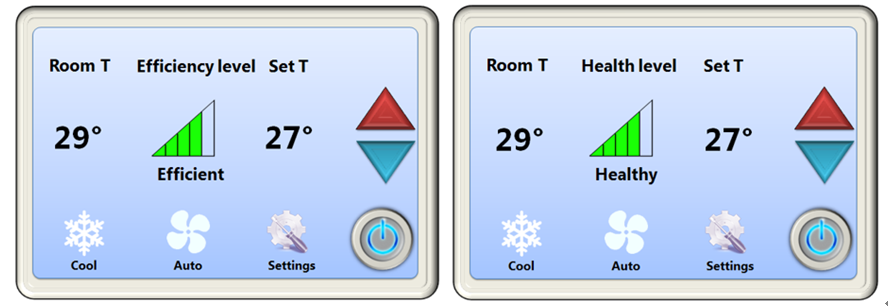课题组庄想灵副教授近日关于空调界面设计的文章被工程与能源领域SCI Top期刊 (3/128) Energy and Buildings接受,该文章揭示了交互式空调界面设计,可以有效的促进办公室的节能行为,并且通过动机网络的分析首次提出以非节能的反馈实现节能行为,这种思路创新在节能动机较弱的办公场所十分关键。研究同时依据问卷测量分析了界面有效改变行为的机制,具体摘要如下:

Abstract:Eco-feedback has been proved effective in promoting energy-saving behaviors in residential contexts. However, in terms of thermostat settings in the workplace, its effectiveness may be reduced by thermostat-setting habits and low motivation to save energy. To solve these problems, this study proposed and compared two types of interactive feedback integrated with thermostat interfaces: feedback of energy efficiency, and feedback of health level of the current temperature setting. Experiments with simulated thermostat interfaces on 84 office workers in a controlled thermal environment showed that both types of interactive feedback resulted in higher temperature setting and preference than interfaces without feedback. Self-reported data revealed the mechanism of the change: feedback not only transformed users’ decision-making style from a habit-driven mode to a deliberate thinking mode, but also induced more positive attitudes towards higher temperatures in setting thermostats. The attitude change was caused by changes in both the belief about importance of related attributes (e.g. comfort not being so important), and in the ratings of temperatures on these attributes (e.g. 27°C being a comfortable temperature). While the two types of feedback did not differ significantly in terms of temperature setting, preference, and attitude change, they acted on different factors underlying thermostat-setting process. These findings demonstrate the power of interactive feedback in promoting energy saving in setting thermostat, and the possibility to save energy with feedback content appears unrelated to energy saving.
参考文献:
Zhuang, X., & Wu, C. (Accepted). The effect of interactive feedback on attitude and behavior change in setting air conditioners in the workplace. Energy and Buildings.
Zhuang, X., & Wu, C. (2014). Saving energy when using air conditioners in Offices—Behavioral pattern and design indications, Energy and Buildings.76:661-668.
(作者:MGJ)

